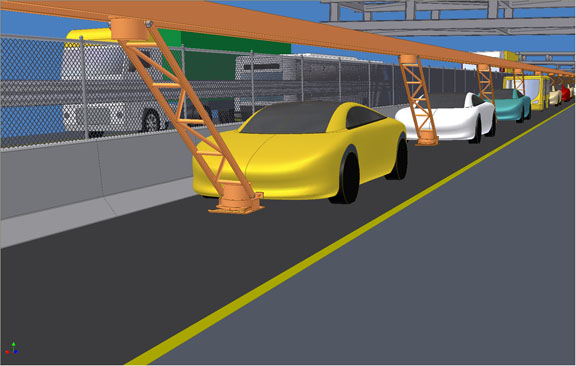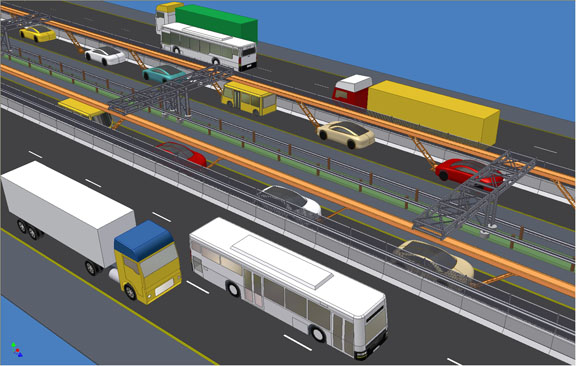Puget Pullway is a commuter-oriented multi-mode, small, fast, neighborhood-to-CBD or suburb-to-suburb people mover, obtainable by adaption of existing grade-separated lanes (or rail line rip-outs) in metro areas. Confined vehicle height, 77 inches, enables using second deck for exits and sidings. Electrification (grid or equivalent, cryo-feeder possible) for rubber-tired mix of vehicle types. Various speed ranges to 68 mph, three-level, redundant, computer controlled. Features all-weather improvements, reliability, automation, 10 times better safety and freight mobility improved by 3 times. Lane capacity upgrade and type-separation. Intense, automation-saturated, compact, hardenable, evacuation capable. Mini-tolls, financially attractive to Public-Private-Partnership (PPP) projects. Stresses "Made in USA. Morgantown's "third cousin". Cost throught to be a small fraction of equivalent rail, depending on fan-out improvements needed to city streets. Can be tunnel-installed. Seeking west coast alliance or ? Factorable segments possible. Please reply on letterhead.
For contact information, visit the Puget Pullway website.
Motorized automation modules (MOTAMs) would be installed on an automated and electrified regional mini-toll lane by adding a 50 lb/ft guideway about 80" above the road surface, to pull, steer, stop, and time-sync entries and exits for existing vehicles, cars, vans; and future minibuses, The automation components are also placed in the MOTAMs to simplify vehicle adaptation. The vehicle is mated to the MOTAM using a strong, stiff, ladder-truss, steerable head and foot. Mating modification to the vehicle requires a bolt-on spreader plate, wedge and low-voltage receptacle under its forebody. The sketch shows fencing and a high barrier to minimize invasion by debris from other lanes. Throughputs available to 5,400 VPH, per deck, one-way. Additional capacity could be added.
All vehicles are to fit an envelope of 77" height X 80" width X TBD inches in length (no semis, no big buses on Pullway). By confining height, the Pullway can provide a second deck for entry/ exit ramps etc., without raising existing overpasses. Using the second deck for transitions will improve throughput, and these will preferably " fly" over existing Rights-of-Way (ROW) into collector/distributors outside of existing ROW and be funded by revenue from Pullway mini-tolls. The Pullway "trunk" would be equipped with stronger "branches".
Benefits: As a goal, a national 20,000 route mile network will reduce, annually, fatalities by 5,500, accidents by 100,000, and motor fuel consumption to offset crude oil imports. Capacity would be about 1.9 billion VehicleMiles/day (8 hour use). Installed power would be one Kilowatt/ft/lane. Motor fuel saved: about 75 M gallons/day, 650 M bbl/yr or 1.3 B bbl/yr of imports at 50% refinery conversion. Various patents pending.
For once, a gift to our children instead of the usual reverse. Let's do what it takes. Early, even risky, experimental proof of concept is justified.

